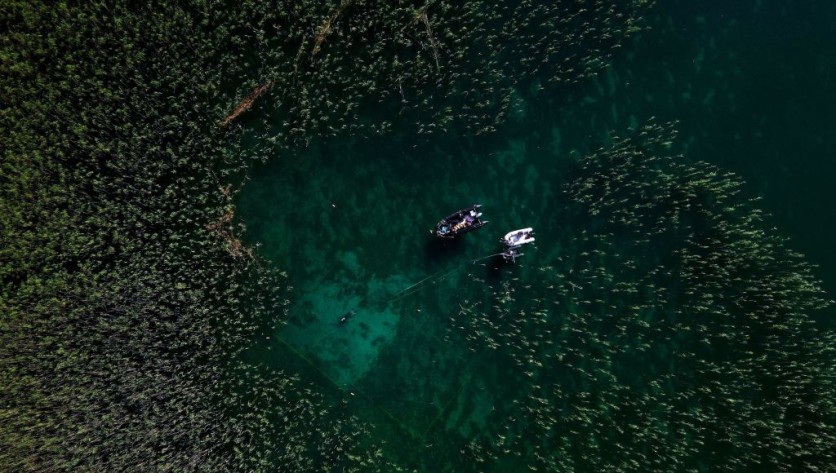Beneath the clear waters of Lake Ohrid, known as the "Pearl of the Balkans," a team of archaeologists has unearthed what could potentially be Europe's earliest sedentary community, wrapped in the mystery of why a defensive spike barrier shielded it.
According to CBS News, experts have unveiled traces of a lakeside settlement from around 8,000 years ago along the Albanian shore of Lake Ohrid, marking it as Europe's oldest known lakeside village to date. Radiocarbon dating places this site's origin between 6000 and 5800 BC.

Oldest Known Lakeside Village in Europe
Albert Hafner, an archaeology professor from Switzerland's University of Bern, told AFP that this discovery predates Mediterranean and Alpine lake-dwelling sites by several hundred years, solidifying its place as Europe's oldest known lakeside village.
Archaeologists have been excavating the site at Lin on the Albanian side of Lake Ohrid for the past four years, led by Swiss and Albanian researchers.
Albanian Prime Minister Edi Rama praised the discovery's historical significance on Facebook, while Swiss Ambassador Ruth Huber personally visited the excavation site in July to gain firsthand insights into the research.
According to the team, this ancient settlement once housed an estimated population of 200 to 500 individuals, with houses either elevated on stilts above the lake's surface or positioned in areas susceptible to regular flooding.
During recent dives, the research team uncovered indications that the village had been fortified with thousands of spiked planks, forming a defensive barrier. The purpose behind such extensive fortifications remains enigmatic and is still under investigation.
'A Real Treasure Trove for Research'
Approximately 100,000 spikes were driven into the lakebed of Lin, a find that Albert Hafner referred to as "a real treasure trove for research."
Despite the challenges posed by underwater vegetation, the researchers, aided by professional divers, have been meticulously exploring the lake bottom, revealing fossilized wood fragments and valuable oak pieces.
By analyzing tree rings, the team can reconstruct the daily life of the village's inhabitants and gain insights into the period's climatic and environmental conditions.
Adrian Anastasi, the Albanian archaeologist leading the local research team, stressed the careful approach required to understand the prehistoric site's structure without causing damage. The lush vegetation at the site sometimes slows the progress of their work.
While the village's reliance on agriculture and domesticated animals for sustenance seems probable, further exploration and study are needed for conclusive findings.
Ilir Gjepali, an Albanian archaeology professor at the site, cited the discovery of seeds, plants, and bones from wild and domesticated animals.
Although it will take another two decades to complete thorough exploration and research, each excavation trip contributes valuable insights into the community's way of life along Lake Ohrid's shores thousands of years ago.
According to Hafner, this discovery holds significance not only for the region but for all of southwest Europe.
Related Article : Archaeologists Find an Extremely Rare 1,300-year-old Gold and Gemstone Necklace From a Medieval Woman in England

ⓒ 2025 TECHTIMES.com All rights reserved. Do not reproduce without permission.




